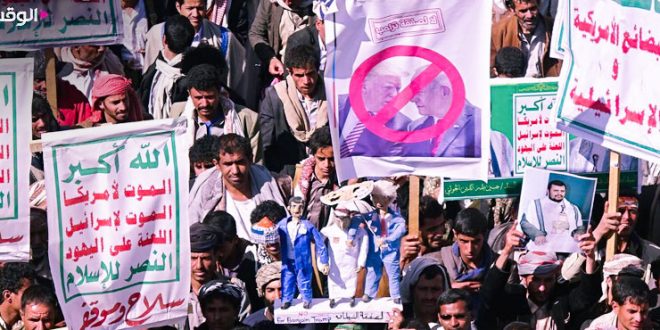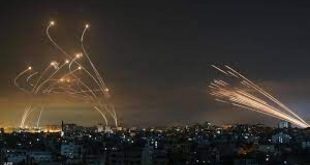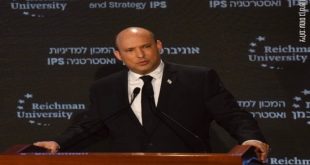Alwaght- Yemen’s Ansarullah recently announced the resistance movement is ready to release two captive Saudi pilots in return for release of Palestinian Hamas’ captives held by Saudi Arabia. One of the important aspects of this suggestion is the open confrontation of Sana’a to the Israeli interests in the Arabian Peninsula and solidarity with the Palestinian resistance.
Since the start of the Saudi military aggression against Yemen on March 26, 2015 in which Saudi Arabia led the Arab coalition under Operation Decisive Storm and then Operation Return of Hope a month later, the Israeli secret role in the war has been under highlight.
This issue became clearer as time went by. In August 2019, Benny Gantz, the then-Israeli foreign minister, in a hearing session of the Knesset’s Committee for Foreign Affairs and Security said that Israel intervened in Yemen in addition to highlighting Tel Aviv’s commitment prevent what he called the Iranian influence in the region.
At the time, Yemeni media shed light on the Israeli role in assassination of Ibrahim Badreddin al-Houthi, the brother of Ansarullah secretary-general. A few months later, Abdul-Malik Badreddin al-Houthi warned the Israelis against any actions against the Yemeni people and threatened to take strong military measures against Tel Aviv.
This confrontation is now in a stage in which Ansarullah talks about its knowledge and close monitoring of the Israeli activities in the region. On Saturday, the Defensive Minister of the Sana’a National Salvation Government (NSG) of Yemen Mohammad Naser al-Atefi in his interview with the press said: “There are many bases and regions that if allowed you can visit to see command centers, wiretapping and spying networks, troops, and officers of the Zionist regime.”
Last week, when Haaretz broke the news about the Emirati-Israeli plans to set up a joint military base in Socotra island of Yemen, the NSG defense minister threatened that if the Israelis take an arrogant action influencing Yemen, the interests of Tel Aviv and its allies in the Red Sea are “within our attack range.”
In what way can Ansarullah threaten Israeli security?
The Israelis have always put Yemeni developments as one of high priorities in their foreign policy agenda because of their geopolitical and historical isolation in the region and their vital dependence on access to the high seas via the Red Sea and Bab-el-Mandeb Strait. The Israeli expansionist temperament that drives its ambition for military domination of the strategic Bab-el-Mandeb Strait between Yemen and Djibouti in the Horn of Africa, which is the gate to the Indian Ocean, makes Tel Aviv one of the key influencers in the President Ali Abdullah Saleh’s repression of popular regime, the Saudi-led military campaign, and also the plans to split the war-ravaged country.
Israel’s enmity to the anti-dictatorship uprisings in Yemen explain why Ansarullah’s hostility to Tell Aviv is old. In fact, the antipathy to the Israeli regime is not a sole matter of ideology or taking pro-Palestinian stance, rather, it is a matter of national interests that make Ansarullah in deeper bonds with resistant groups in Palestine and Lebanon.
According to a report published in March 2020 by Shaul Shay, an Israeli military historian and the research manager of Institute for Policies and Strategies, the Hezbollah-Ansarullah military cooperation dates back to 2009 and during the sixth Saada war. The bilateral ties even surged when in 2014 the revolutionary movement along with the army took control of the capital Sana’a.
Ansarullah’s ties with the Palestinian and Lebanese groups include exchange of operation and field experiences. Therefore, the anti-Israeli threats by Ansarullah, which come with the aim of pressuring the US and the Israeli regime as the main behind-the-scenes actors of the anti-Yemeni aggression to persuade Saudi Arabia to halt the war and lift the blockade, now in its sixth year, are not slogans and verbal propaganda but serious challenges to the Israelis in practice.
During five years of war, Ansarullah successfully targeted Saudi and Emirati vessels using coastal missiles. The US ships also did not survive the attacks. Naturally, one of the areas where Ansarullah can threaten the Israeli regime is the ships sailing near Yemen in Bab-el-Mandeb.
The Yemenis massively use a range of weapons like rockets, ballistic missiles, and even cruise missiles to target the coalition forces in their country and even deep in Saudi territories and parts of the UAE. Although Hezbollah has enormous experience in firing missiles, the war in Yemen provides a precious chance for fresh experiences for firing long-range ballistic missiles (with over 1,000-kilometer range) and also cruise missiles.
As today drones provide a significant weapon in the asymmetrical warfare, Ansarullah uses the armed drones to launch attacks on the coalition warships and costal and oil facilities in Saudi Arabia. This is a creative tactic that the Palestinian and Lebanese groups can learn and apply in the future confrontations against the Israelis.
Naval mines provide another weapon to deal blows to the aggression countries that so far even the modern military technologies provided to Saudi Arabia and the UAE by their Western allies have gone nowhere in deterring it.
Ansarullah also has a several-time experience of penetrating much-vaunted US-made Patriot air defense systems. Hezbollah has no such experience with the Israeli air defenses. The Lebanese and Palestinian movements have much to learn from the Yemenis.
Ansarullah is in a battle in which Saudi Arabia has absolute air superiority, a situation Hezbollah and Hamas were in during the Israeli wars. The Yemeni movement during the war managed to repurpose air-to-air Soviet missiles that were used on MiG-29 fighter jets of Yemen air force into surface-to-air missiles carried atop light trucks and shot down a number of coalition aircraft including F-15 fighter jets, Apache attack helicopters, and also a large number of Western-provided modern Saudi drones.
So, the best conclusion of the Ansarullah anti-Israeli threats is that the resistant movement wants to drain roots of military aggression on Yemen and also the covert Israeli conspiracies for the future via presence in southern Yemeni regions.
 WILAYAH NEWS VOICE OF THE GLOBAL AWAKENING
WILAYAH NEWS VOICE OF THE GLOBAL AWAKENING






